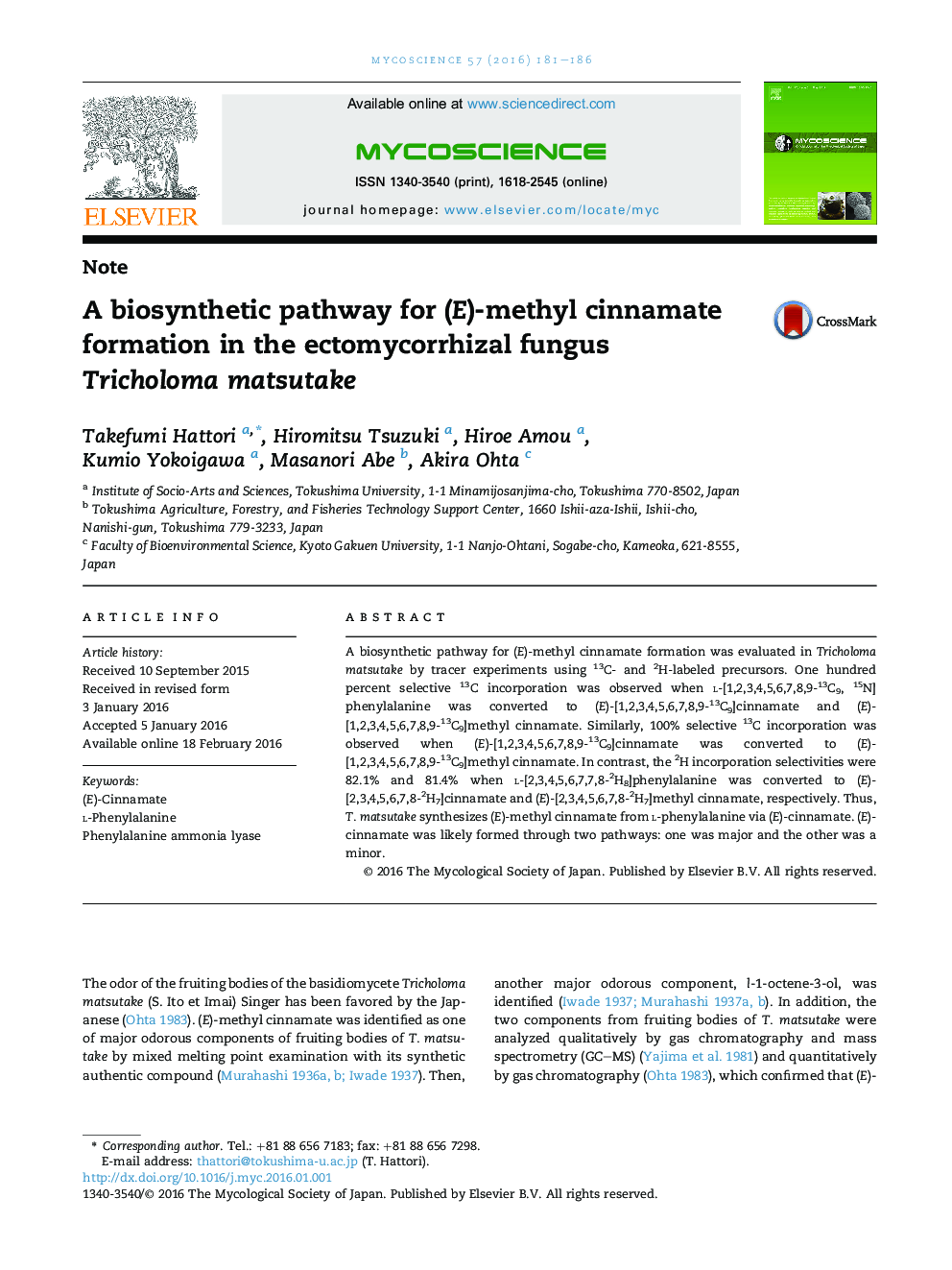| Article ID | Journal | Published Year | Pages | File Type |
|---|---|---|---|---|
| 2060118 | Mycoscience | 2016 | 6 Pages |
•Methyl cinnamate was formed from phenylalanine via cinnamate in Tricholoma matsutake.•No C–C bond cleavage occurred for phenylalanine and cinnamate during the reactions.•C–H bond cleavage occurred partly was not explained by PAL catalytic activity.
A biosynthetic pathway for (E)-methyl cinnamate formation was evaluated in Tricholoma matsutake by tracer experiments using 13C- and 2H-labeled precursors. One hundred percent selective 13C incorporation was observed when l-[1,2,3,4,5,6,7,8,9-13C9, 15N]phenylalanine was converted to (E)-[1,2,3,4,5,6,7,8,9-13C9]cinnamate and (E)-[1,2,3,4,5,6,7,8,9-13C9]methyl cinnamate. Similarly, 100% selective 13C incorporation was observed when (E)-[1,2,3,4,5,6,7,8,9-13C9]cinnamate was converted to (E)-[1,2,3,4,5,6,7,8,9-13C9]methyl cinnamate. In contrast, the 2H incorporation selectivities were 82.1% and 81.4% when l-[2,3,4,5,6,7,7,8-2H8]phenylalanine was converted to (E)-[2,3,4,5,6,7,8-2H7]cinnamate and (E)-[2,3,4,5,6,7,8-2H7]methyl cinnamate, respectively. Thus, T. matsutake synthesizes (E)-methyl cinnamate from l-phenylalanine via (E)-cinnamate. (E)-cinnamate was likely formed through two pathways: one was major and the other was a minor.
